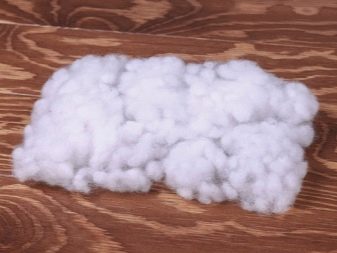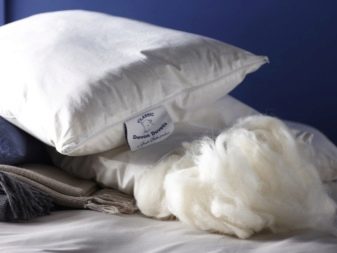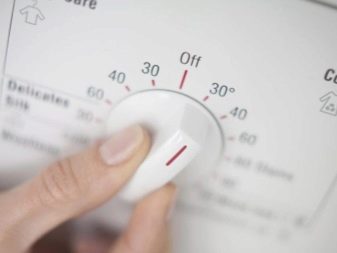Which is better: holofiber or synthetic winterizer?

Down has always been considered the best filler for jackets, pillows and blankets. However, such products have a rather high price, and in some they cause allergies. Thanks to modern technologies, it was possible to create alternative insulation materials that have a more democratic cost - these are synthetic winterizer and holofiber. This article describes the characteristics of the materials, and also tells what their differences are and what to look for when buying.

Sintepon
Sintepon is an abbreviation of the phrase "synthetic canvas". It is made from special polyester fibers made from a fused thermoplastic called polyethylene terephthalate. This material was withdrawn in England in 1935. Natural materials are often added to polyesters, for example, threads made from cotton, wool or bamboo, which were obtained from recycling fabric waste. When enlarged, the fibers resemble a spiral or a spring, in large quantities they intertwine with each other and constitute a flexible material that has a large number of useful properties.

One of the main advantages of padding polyester is the ability to retain heat for a long time. Another plus is considered to be low weight, which is why jackets and down-padded coats on padding polyester are very light, and blankets are airy. The material does not deteriorate when compressed and very quickly returns to its original form. It does not absorb moisture and dries quickly after washing.


The synthetic winterizer is environmentally friendly and harmless. It is non-toxic and non-allergenic. The exception is some types made by the adhesive method. Insulation is produced in three ways.
- Thermal. In this case, the fibers are held together using high temperatures.
- Needle punched. This method involves the mechanical connection of the spirals.
- Glue. It has already been mentioned above. Such a filler is made by gluing the fibers with a special emulsion.

The cost of synthetic linen varies depending on its quality and production method. The most environmentally friendly is the synthetic winterizer made by the needle-punched method.
Holofiber
Holofiber is more modern. Products with this filler appeared on the domestic market relatively recently, but they are already in high demand. The peculiarity of this material is that it lets in air, which fills the structure of the threads, thereby providing more warmth to outerwear. Actually, it was this function of the insulation that formed the basis of its name. Hollow fiber in English means "hollow fiber".


The twisting density of the spirals that make up holofiber is much higher than in its synthetic counterpart. Due to this, the air that has penetrated into the insulation heats up faster and does not cool down much longer, respectively, and outerwear with holofiber filling is much warmer than synthetic winterizer.
Holofiber perfectly holds its shape thanks to the thermal method of bonding hollow spirals. The fibers are heated and fused at the junctions with each other. Thus, an elastic and flexible material is obtained that does not deform under compression and quickly restores its original appearance.

This insulation has become the unofficial leader among synthetic insulation. It has many advantages:
- it has a high level of aeration, which allows the body to breathe underneath;
- moisture-repellent properties ensure a long service life;
- the filler does not absorb odors, which is very convenient, for example, for smokers;


- holofiber does not ignite even when in contact with a flame;
- the material perfectly retains dust on the surface, preventing it from penetrating into the structure;
- goods with holofiber in the form of insulation are easy to wash: it does not shrink after drying;
- a huge advantage of this filler is environmental friendliness: it is completely non-toxic, as a result of which it can be used for sewing clothes, bedding and toys for children.


Sintepon and holofiber have a couple of common advantages, making them preferable to natural insulation. Firstly, they are immune to microbes, and secondly, they have a democratic price, so the goods are more affordable.


How to tell?
Despite the presence of similar properties, there is still a significant difference between these two materials. In comparison with synthetic fabric, holofiber is considered a more technological, strong, high-quality and durable filler. He is able to maintain its original appearance for a significantly longer amount of time. The environmental friendliness of holofiber is still higher than that of its synthetic counterpart, which is why it is more recommended for children's clothes.

What's better?
For pillows and blankets
When choosing a filler for bedding, you should again turn to their properties. Both synthetic winterizer and holofiber are lightweight and provide warmth and comfort during sleep. But there is one feature of a synthetic canvas that negatively affects its quality, while its analogue is completely environmentally friendly and hypoallergenic: a synthetic winterizer bought in an unverified place at a low price may be of very low quality, which will negatively affect the health of the body. The fact is that some unscrupulous manufacturers use secondary raw materials for the production of this insulation.
The resulting product is strictly prohibited for use.

Another point that speaks in favor of holofiber as a filler is the long service life of such products.Pillows, blankets and other padding polyester sleeping accessories wear out faster. Also, holofiber practically does not accumulate static electricity, which is important. Spiral fibers provide optimal aeration of the material, therefore, sleeping on it is much more pleasant and comfortable.


clothing
Most often, synthetic winterizer and holofiber are used for the production of insulated jackets, down jackets, overalls and even hats. Outerwear with these fillers is very lightweight and provides warmth for a long time. Coats with synthetic insulation are easier to care for than down or other natural ones. Both materials are optimal for outerwear, however, in this case, the holofiber is ahead of the synthetic fabric in some points:
- the material is very flexible, practically weightless and perfectly retains heat;
- a high level of aeration allows the body to breathe even under outerwear;
- spiral fibers perfectly keep warm air, so down jackets with holofiber insulation are perfect for frosts down to -25 degrees.
In turn, the synthetic winterizer is suitable for temperatures not lower than -10 degrees, which is not the limit for our latitudes. In terms of warmth, many people compare holofiber with natural fluff.


For kids
It is necessary to purchase children's accessories with special care, because toxic substances in the composition of clothing can cause an allergic skin reaction. When buying a blanket or pillow, it is recommended to give preference to holofiber filler, as it is more environmentally friendly and has a number of hypoallergenic properties. In addition to the flexibility of the material, you need to pay attention to the ease of washing such a product. When buying sleeping accessories with synthetic insulation, it is better not to save money, since a cheap synthetic winterizer can be hazardous to health.
It is also better to take children's down jackets and overalls with holofiber filler, since the synthetic winterizer after washing loses up to half of its volume. Holofiber does not absorb sweat, retains heat perfectly and does not allow the child's body to overheat (this is one of the most important points when choosing clothes for children).

Care rules
In order for a thing with insulation to serve for a long time, you should properly take care of it. One of the main rules is the prohibition of prolonged soaking of clothes or blankets. The maximum recommended time is thirty minutes. In no case should you bleach overalls or a jacket filled with padding polyester or holofiber. The procedure will negatively affect its quality. Drying should take place at room temperature. Before cleaning, it is better to carefully study the clothing label and follow only it.
Generally, washing can be done at 30 degrees. Products with synthetic filling can be washed in an automatic machine.
It is recommended to use capsules for washing or gel: they do not affect the quality as much as powder.


It is not necessary to squeeze out such a thing. Clothes should be hung on a hanger, pillows and blankets should be placed on the linen rack.
If the synthetic fiber has fallen off or has become less bulky, the jacket can be beaten off with a stick, or you can get the filler by making a small incision on the wrong side, and comb the synthetic winterizer with a special device. Then the insulation is returned to its place, and the jacket is re-quilted.

For information on which filler to choose for a toy (synthetic winterizer, synthetic fluff, holofiber), see the next video.








